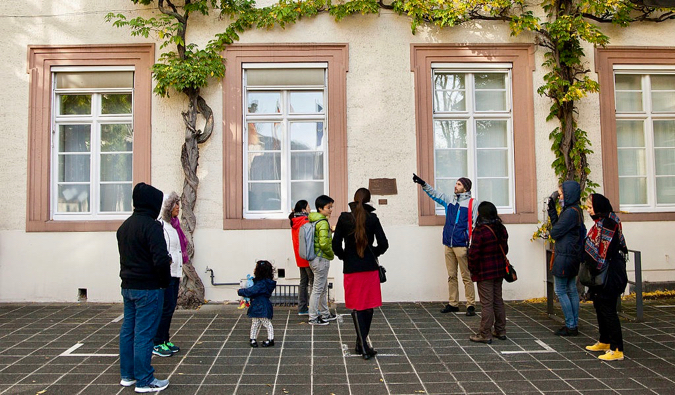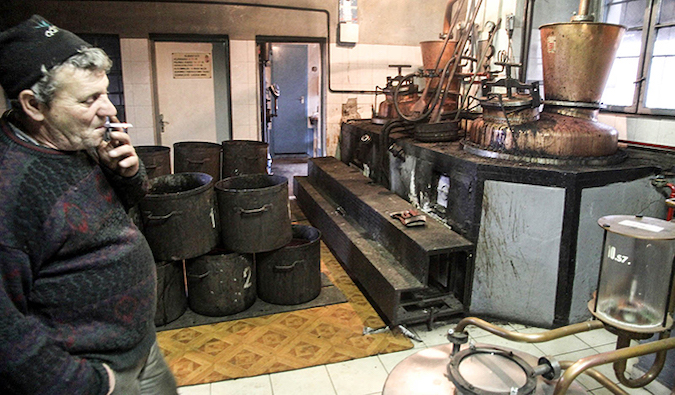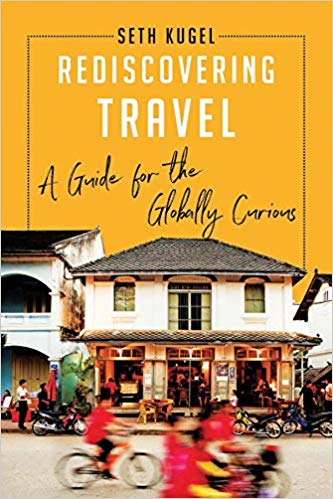
Posted: 05/18/2019 | May 18th, 2019
Europe is one of the most popular destinations in the world.
While I love solo travel as much as the next person — and think Europe is one of the best places to backpack around — the continent is also a huge destination for tour groups.
When you think of group tours, you may imagine a horde of camera-clicking tourists wearing socks and sandals swarming off a massive bus, taking lots of pictures, and then moving on to the next site.
In the past, that image was pretty accurate.
But now? Not so much.
These days, the best tours have evolved and are much more nuanced and diverse, catering to all different age groups and travel styles. From hop-on, hop-off tours and river cruises to big bus and backpacker tours and everything in between, there’s a wide variety of tour options now.
No matter what kind of experience you’re looking for (or your budget), you’ll be able to find awesome and insightful tours to help you make the most out of your next trip to Europe.
I’ve taken tours offered by dozens of companies on the continent. Some were good, some bad, some great.
If you’re thinking of taking a tour around Europe — whether because it saves you time or money — here is a list of the best companies:
THE BEST DY TOURS IN EUROPE

New Europe
Pretty much every major city in Europe has a free walking tour. They are a fun, insightful way to orient yourself and learn about the history of a city. Plus, you’ll have access to a local expert who can answer any and all questions you have about the destination!
New Europe is one of the largest and best tour companies out there. Its guides are knowledgeable, and its tours cover all the major tourist sites. They also offer specialized tours, like food tours, day trips, and tours to specific historical sites (such as Edinburgh Castle or the Sachsenhausen concentration camp). You can find them pretty much everywhere in Europe. Just remember to tip your guides at the end!
Most tours will last around 3 hours. For their paid tours, prices start around 15 EUR per person and go up from there, depending on the duration of the tour.
–> Click here to learn more about New Europe!
Free Tours By Foot
Another free option is Free Tours By Foot. Like New Europe, they have qualified guides and a wide variety of themed tours in over 30 destinations across the continent. Chances are you’ll be able to find a tour with them (or with a company affiliated with them) in every major city around the continent. Tours usually last around 3 hours, so make sure you wear comfortable shoes. Since they offer free tours, make sure you tip your guide at the end.
They also have partnerships with other tour companies so you can find more specialized options here as well. For example, they have a great beer tour of Paris (as well as a macaroon tour if that’s more your style). Those tours aren’t free (they cost around 60 EUR per person) but they are a great way to get a specialized insight (as well as to try some amazing French beer and desserts!).
–> Click here to learn more about Free Tours By Foot!
Walks
If you’re looking for something a little more in-depth, my favorite walking tour company in Europe is Walks, which can be found in London, Athens, and various cities in Spain and Italy.
What makes these food, art, and history tours so special is that they get access to places others don’t, like the Louvre after hours, secret spots in the Vatican or Versailles, etc. The guides are incredibly well informed, so you’ll learn a ton of information. If you’re looking for a paid walking tour company, Walks is the best.
Their tours are usually around 3 hours, though they also have a few full-day options as well. Expect to pay at least 60-90 EUR per person. Be sure to book in advance as well, as many of their best tours (like their Sistine Chapel early entrance tour) sell out fast!
–> Click here to learn more about Walks!
Context Travel
Context offers comprehensive history, food, and cultural tours all around the continent. They are long, intellectual walks packed with information. Context hires experts to lead these tours (e.g., a chef for a food tour), which is why they are some of my favorites. They aren’t cheap, but they are worth every penny if you’re serious about getting beneath the surface of a destination. Expect to pay around 100 EUR per person.
Context also offers amazing private tours, and you can book customized tours as well if there is something specific you’re interested in.
–> Click here to learn more about Context!
THE BEST MULTI-DAY TOURS IN EUROPE

Busabout
Busabout is a hop-on, hop-off bus service that is popular with the backpacker crowd looking to meet and connect with other travelers. You can purchase tickets that let you travel the whole network with a set number of stops, and you can get on and off whenever you want.
The only downside to Busabout is that if you want to visit a city not on one of its routes, you have to make your own way there at an additional cost. But if you are looking to meet lots of people and not spend too much time worrying about your itinerary, then this is a great, affordable option.
–> Click here to learn more about Busabout!
Viking River Cruises
With multiday and multi-week itineraries to choose from, this is a solid option for anyone looking for a “hands-free” trip around Europe. Much like ocean cruises, with Viking, you simply need to book your cruise and go along for the ride. You’ll explore the heart of Europe from a unique perspective and the comfort of your own cabin, while stopping at some of the most interesting cities Europe has to offer along scenic rivers like the Danube, the Seine, and the Rhine. You’ll also get free Wi-Fi, free port excursions, onboard meals, and 24-hour concierge.
–> Click here to learn more about Viking!
Intrepid Travel
When it comes to multiday (or even multi-week) guided tours, Intrepid Travel is my go-to choice. I’ve been going on their tours for years (I just went on a trip to Jordan with them), and I’ve yet to be disappointed. The guides are excellent, the company offers amazing off-the-beaten-track itineraries, and it is committed to the local environment and support local communities. Their small groups ensure you’re never on one of those giant bus tours either.
BONUS: As a reader of this site, you’ll get discounts on some of Intrepid’s tours. Each month, Intrepid offers Nomadic Matt readers a discount on some of its best tours around Europe and the world. Simply check out the website for more details!
–> Click here to learn more about Intrepid Travel!
While solo travel will always be my favorite way to travel, I really do enjoy going on tours. They are a fun way to meet other travelers as well as locals while you see and experience new destinations.
So if you’re looking for a tour on your next trip to Europe, be sure to consider the options above.
Book Your Trip to Europe: Logistical Tips and Tricks
Book Your Flight
Find a cheap flight by using Skyscanner or Momondo. They are my two favorite search engines, because they search websites and airlines around the globe, so you always know no stone is being left unturned.
Book Your Accommodation
You can book your hostel with Hostelworld. If you want to stay somewhere other than a hostel, use Booking.com, as it consistently returns the cheapest rates for guesthouses and cheap hotels. I use it all the time. Here are my favorite hostels in Europe.
Don’t Forget Travel Insurance
Travel insurance will protect you against illness, injury, theft, and cancellations. It’s comprehensive protection in case anything goes wrong. I never go on a trip without it, as I’ve had to use it many times in the past. I’ve been using World Nomads for ten years. My favorite companies that offer the best service and value are:
- World Nomads (for everyone below 70)
- Insure My Trip (for those over 70)
Looking for the best companies to save money with?
Check out my resource page for the best companies to use when you travel! I list all the ones I use — and I think they will help you too!
Looking for more information on visiting Europe?
Check out my in-depth destination guide to Europe with more tips on what to see and do, costs, ways to save, and much, much more!
Photo credit: 1
The post The Best Tour Companies in Europe in 2019 appeared first on Nomadic Matt's Travel Site.






